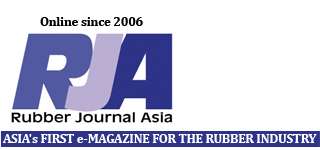With around 1.5 billion tyres discarded globally every year, this is identified as one of the major causes of serious environmental pollution. The research team at the Department of Chemistry at the Korea Advanced Institute of Science and Technology (KAIST) has achieved a breakthrough by selectively converting waste tyres into high-purity cyclic alkenes, valuable chemical building blocks used in the production of rubber and nylon fibres. This advance marks a new milestone in chemical recycling technology for waste tyres.
The team, led by Professor Soon Hyeok Hong, has developed a dual-catalyst-based reaction system that overcomes the long-standing challenges associated with recycling vulcanised rubber materials.
Tyres are composed of complex blends of synthetic and natural rubber, and their physical strength and durability are reinforced with additives such as silica, carbon black, and antioxidants. In particular, cross-linking between rubber chains is formed through the vulcanisation process, giving them a structure resistant to heat and pressure, which is one of the main reasons why chemical recycling of waste tyres is difficult.
Until now, waste tyre recycling has mainly relied on pyrolysis or mechanical recycling methods. The pyrolysis method is a technology that decomposes polymer chains at high temperatures of 350-800°C to convert them into fuel oil, but it clearly has limitations such as high energy consumption, low selectivity, and the production of low-quality hydrocarbon mixtures.
To solve these problems, the research team developed a method to convert waste rubber into useful chemicals using dual catalysis. The first catalyst helps to break down rubber molecules by changing their bonding structure, and the second catalyst creates cyclic compounds through a ring-closing reaction.
This process shows high selectivity of up to 92% and a yield of 82%. The produced cyclopentene can be recycled into rubber, and cyclohexene can be used as a raw material for nylon fibres, making them industrially very valuable.
The research team successfully applied the developed system to discarded waste tyres, achieving selective conversion into high-purity cyclic alkenes. Unlike the existing pyrolysis method, this is evaluated as a new turning point in the field of waste tyre recycling as it can produce high-value chemicals through low-temperature precision catalytic reactions.
In addition, this catalytic platform is compatible with a wide range of synthetic and waste rubbers, positioning it as a promising foundation for scalable, circular solutions in the polymer and materials industries.
Professor Hong stated, “This research offers an innovative solution for the chemical recycling of waste tyres. We aim to develop next-generation high-efficiency catalysts and lay the groundwork for commercialisation to enhance economic feasibility. Ultimately, our goal is to contribute to solving the broader waste plastic problem through fundamental chemistry.”
This research, in which Beomsoon Park, Kyoungil Cho, and Kyungmin Choi participated, was supported by the National Research Foundation of Korea and was published online in the academic journal Chem in June.

